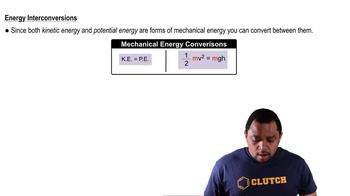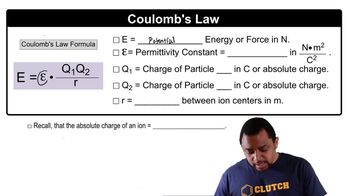Here are the essential concepts you must grasp in order to answer the question correctly.
Electrostatic Potential Energy
Electrostatic potential energy is the energy stored due to the position of charged particles relative to each other. It is calculated using the formula U = k * (q1 * q2) / r, where U is the potential energy, k is Coulomb's constant, q1 and q2 are the charges, and r is the distance between them. For electrons, which have the same charge, this energy will be negative, indicating a repulsive interaction.
Recommended video:
Kinetic & Potential Energy
Coulomb's Law
Coulomb's Law describes the force between two charged objects and is fundamental in calculating electrostatic interactions. It states that the force (F) between two charges is directly proportional to the product of the magnitudes of the charges and inversely proportional to the square of the distance between them. This law is essential for determining the potential energy in systems involving charged particles.
Recommended video:
Unit Conversion
In chemistry and physics, unit conversion is crucial for ensuring that measurements are in compatible units. In this context, the distance between the electrons is given in picometers (pm), which must be converted to meters (m) for calculations involving electrostatic potential energy. Understanding how to convert units accurately is vital for obtaining correct results in scientific calculations.
Recommended video:
 Verified step by step guidance
Verified step by step guidance


